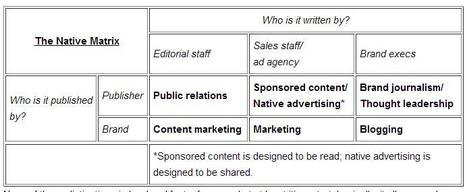Getting major media placements in outlets such as "NBC Nightly News" and The Huffington Post is every PR and media relations professional's dream—and if you can get 1 million or so people to visit your brand's website in response to the coverage, that's icing on the cake.
This year, The Ohio State University Wexner Medical Center pulled off this feat using a brand journalism approach. Here's how it attracted so much public attention to the news so quickly....



 Your new post is loading...
Your new post is loading...




















Here's a great lesson in brand journalism and how an Alzheimer's medical story went viral.